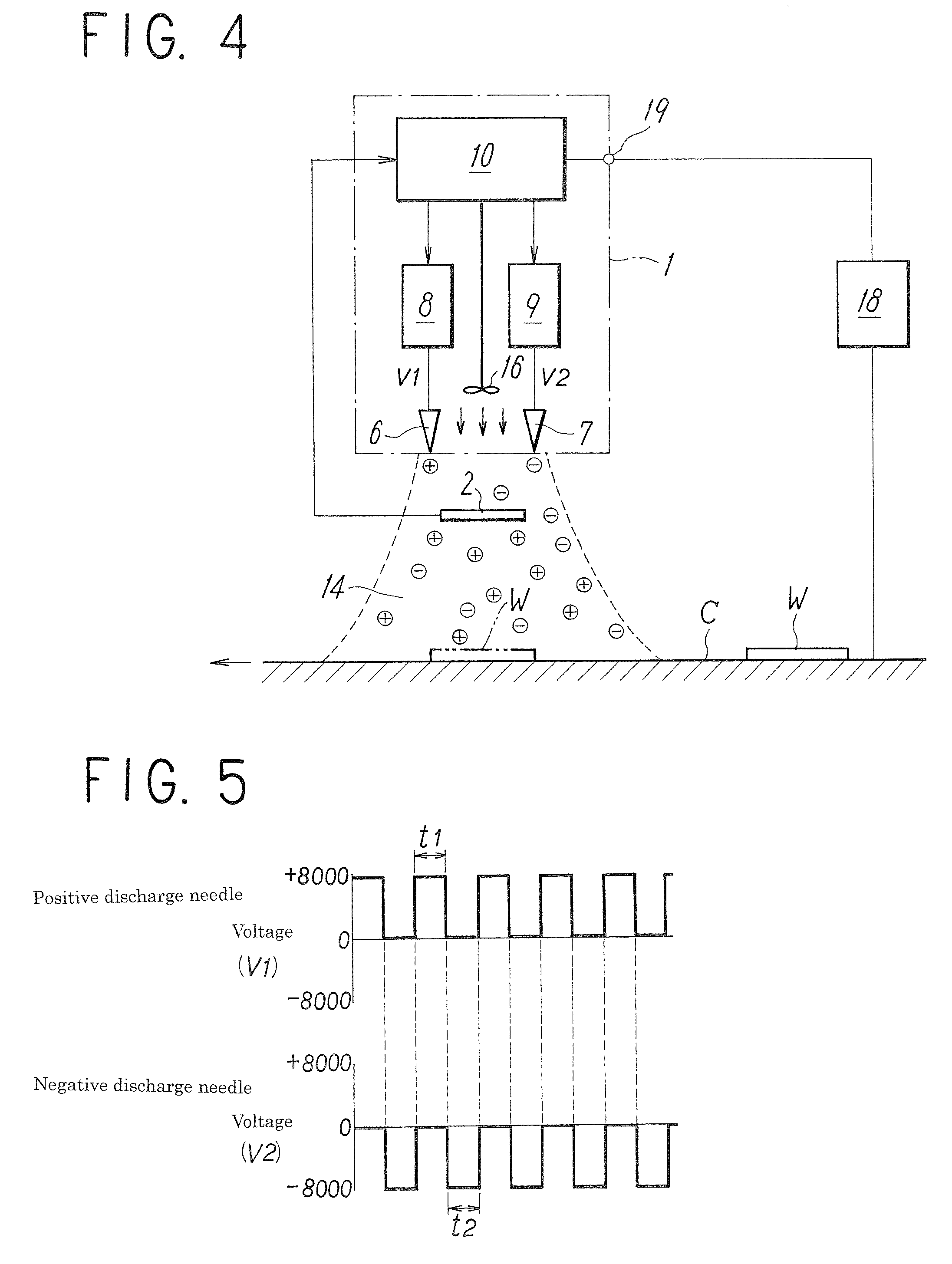Ion balance adjusting method and method of removing charges from workpiece by using the same
a technology of adjusting method and workpiece, which is applied in the direction of electrostatic charge, corona discharge, electrical apparatus, etc., can solve the problems of inability to accurately confirm the charge of the workpiece in which one of the positive and negative polarities is charged, and the technique cannot directly confirm the charge of the positive and negative ions. the effect of balanced and balanced
- Summary
- Abstract
- Description
- Claims
- Application Information
AI Technical Summary
Benefits of technology
Problems solved by technology
Method used
Image
Examples
Embodiment Construction
[0026]FIG. 1 shows a charge removing apparatus used for carrying out a method according to the present invention. In FIG. 1, reference numeral 1 denotes ionizer for releasing positive and negative ions, and 2 denotes a surface potential sensor for measuring an ion balance between the positive and negative ions released from the ionizer 1.
[0027]As illustrated in FIG. 4, the ionizer 1 is disposed to face a conveying apparatus C, e.g., a conveyor, for conveying a charged workpiece W. The ionizer releases the positive and negative ions into a charge removing area 14, to thereby remove charges from the workpiece W. In FIG. 4, reference numeral 18 denotes a conveyance controller for operating and controlling the conveying apparatus C.
[0028]The ionizer 1 has a plurality of ion release ports 5 formed in a housing 4. As seen from FIGS. 2 and 4, a positive electrode needle 6 and a negative electrode needle 7 are disposed in each of the ion release ports 5. Further, a positive high-voltage gen...
PUM
 Login to View More
Login to View More Abstract
Description
Claims
Application Information
 Login to View More
Login to View More - R&D
- Intellectual Property
- Life Sciences
- Materials
- Tech Scout
- Unparalleled Data Quality
- Higher Quality Content
- 60% Fewer Hallucinations
Browse by: Latest US Patents, China's latest patents, Technical Efficacy Thesaurus, Application Domain, Technology Topic, Popular Technical Reports.
© 2025 PatSnap. All rights reserved.Legal|Privacy policy|Modern Slavery Act Transparency Statement|Sitemap|About US| Contact US: help@patsnap.com



